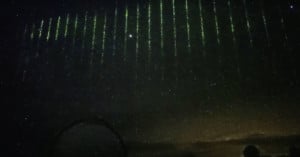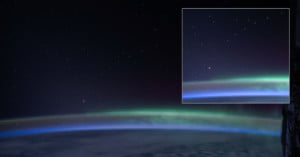
Satellites are Spoiling Images Taken by the Hubble Space Telescope
The images taken by the Hubble Space Telescope are increasingly being spoiled by thousands of satellites streaking through the sky.

The images taken by the Hubble Space Telescope are increasingly being spoiled by thousands of satellites streaking through the sky.

Mysterious green laser beams that appeared over the night sky in Hawaii have been pinned on a Chinese satellite.

A recently launched NASA satellite has sent back this stunning mosaic image of Earth, captured over a 24-hour period.

Astronomers have raised concerns over a new satellite that is now one of the brightest objects in the night sky that could also hinder astrophotographers.

Starlink satellites are normally invisible to the eye but photographer and aurora tour guide Ronn Murray captured 49 of them as they sailed through the beautiful northern lights in Alaska.

A couple of days ago, SpaceX CEO Elon Musk unveiled a plan to help keep the company's thousands of Starlink satellites from becoming a very noticeable blight on the night sky, a complaint we've heard from astronomers and astrophotographers alike.

While photographing the Aurora from above the Indian Ocean, astronauts on the ISS accidentally captured something else as well. Just like Earth-bound photographers, they're now having to deal with photo bombing by the many 'Starlink' satellites that SpaceX has launched.

Did you know that you can easily see geostationary satellites by shooting time-lapse photos of the night sky? Reddit user jannne took his camera outside this week and managed to capture a number of satellites in their photos.

Back in June, we reported that a company called Planet Labs is working to improve the efficiency of satellite photography by using a large number of tiny satellites instead of a single satellite.
Company co-founder and CEO Will Marshal recently gave a TED Talk (shown above) that sheds some light on what the company is doing.

Taken by a collection of three satellites orbiting Earth -- Landsat 7, ASTER, and MODIS -- the images above and below are part of an incredible collection of photos that were captured from space purely for their aesthetic beauty, rather than the usual scientific reasoning.

There are a couple of different types of imaging satellites currently orbiting our planet. On one end of the spectrum are specialized satellites that gather very high-resolution imagery in which you can identify objects as small as 3 feet across. On the other are the lower resolution satellites that beam down photos of larger areas.
California company Planet Labs wants to fill the space in-between, by providing an affordable middle-of-the-road option for companies interested in using it. To that effect, they're planning on launching 28 tiny, mid-resolution satellites called "Doves" into space before the year is out.

Late last month, NASA launched Orbital Sciences' Antares rocket into space, and with it a trio of satellites powered, get this, by Android Phones. Part of the NASA project "PhoneSats," the three satellites spent a total of 5 days in space, after which they burned up in the atmosphere as planned -- but not before they had a chance to beam down some sub-par smartphone snaps of Earth as seen from Orbit.